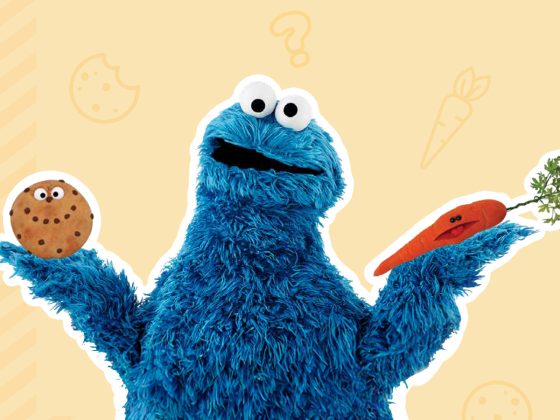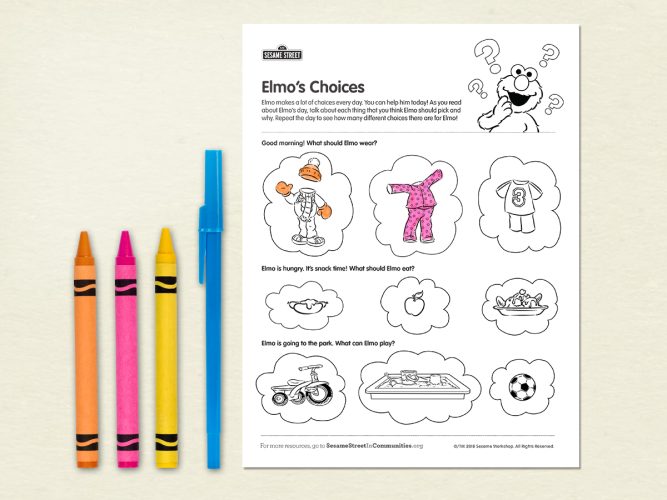
Session 2: Making Choices
Opportunities to practice making simple choices can lead to thoughtful decision-making about spending, sharing, and saving.
Welcome to Session 2: Making Choices!
In this session, explore resources, hands-on activities, and talking points to help teach young children about making choices—a key financial education skill!
1. Talk Together
Talk Together
Our choices affect all parts of our lives—our friends and family, our health, our finances, and more. Learning how to think through choices and understand outcomes are skills that you can begin teaching children in their early years. Opportunities to practice making simple choices can lead to thoughtful decision-making about spending, sharing, and saving money down the road.
Children are already practicing making choices—they can choose an activity during free play, whom to play with, which crayon to use, and what to draw.
Talk about children’s decisions with them! Emphasize that they have made a choice—they picked one thing instead of something else. You can help children become aware of their choices and how they make decisions. You might use language such as: I chose ___ because ____. (I chose purple because it’s my favorite color.) What’s most important is helping children think about how they made their decisions, not to evaluate whether their choices are right or wrong.
To pick one thing instead of something else
2. Explore Together
Explore Together
Together with children, watch this video of Cookie Monster making choices about his very favorite thing!
Then, ask questions like:
- What did Cookie Monster want to do at first?
- Cookie Monster’s mom told him he had lots of choices. What were they?
- What did Cookie Monster choose to do in the end?
- What would you choose if you were Cookie Monster? Why?
3. Play Together
Play Together
Print out this activity sheet and talk about the choices Elmo can make.
- Ask kids when Elmo might want a coat and hat, and when he might want pajamas.
- Which is a healthy “anytime” snack for Elmo: an apple or ice cream?
- Encourage kids to describe the choices they make during the day.
- How are they similar (or different) from Elmo’s?
Consider these ways to integrate talking about choices throughout the day:
Noticing the Weather
During conversations about the day’s weather, guide children to talk about their choices. It’s a rainy day! Did anyone choose to wear or bring anything special today? Why or why not?
Choice Time
Model thinking aloud at the beginning of Choice Time. It looks like there are different toys at the building table today. That could be interesting to check out. We’ve been talking about plants this week. I wonder what items are at the science table. What would I like to explore today?
Offer support to children during choice time. It looks like the art table has a lot of people. Who would like to choose to move to another table that has more space?
Story Time
When you read storybooks, ask questions about the characters’ choices. Why do you think [character] made that choice? How did that choice work out for them? Would you make the same choice or a different choice? Why?
Outdoor Play
What did you choose to do outside today? Which part of the playground did you choose to go to first?
Art Time
How did you choose what to draw? What colors did you choose?
4. Communicating with Caregivers
Communicating with Caregivers
Share the article Making Choices to encourage families to talk through the different choices children can make throughout their day and how people also make choices about how to use money.


